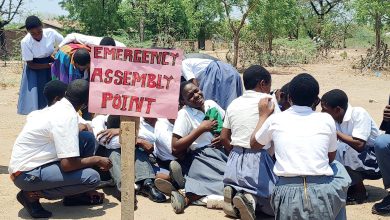Scientists probe landslides
Travelling from Mulanje to Blantyre, scarred hills flash past—deprived of their lushness and soil cover.
There are two massive scars on Soche Hill slopes in Blantyre, one from Michesi Hill to Bokosi Village in Phalombe and seven in Mulanje, where mudslides and rockslides killed hundreds two years ago.

Mikolongwe, Maravi, Soche… all bear trails of destruction caused by landslides in March 2023.
The legacy of Cyclone Freddy persistently pops into view across Southern Malawi where landslides and flash floods hit over 2.2 million people, with 676 confirmed dead, and 537 still missing.
Weak link
Following the tragedy, rock scientists drilled into the bowels of the worst-hit hills—Soche, Michesi and Ntauchira in Chiradzulu—to investigate why they crumbled like cookies.
The result—Fragile rocks underneath make the hills prone to more landslides, reports the team from the Department of Geological Surveys in Zomba.
“Mudslide susceptibility assessments conducted shortly after the devastating cyclone point to syenites, rocks that crack and break down quickly when they absorb water for a long time,” says lead scientist Dr Annock Chiwona.
The expert analyses the chemical composition of rocks to figure out their risks and benefits.
His team extracted rocks and soil from the bowels of the worst hit mountains, hitting the granite bedrocks rich in potassium.
He reckons the rapid loss of hillside forests due to population pressure, with Soche’s protected reserve ousted by the battered settlement, increasingly expose the thinly hidden rocks to harsh weather.
Protracted water absorption can weaken the syenites’ resistance over time, especially after prolonged exposure to extreme conditions.
The findings partly explain the rising risk of deadly landslides.
Caught unawares
The new addition to the country’s disaster mix caught weather experts at the Department of Climate Change and Meteorological Services unprepared.
Days before Cyclone Freddy made landfall in Madagascar on the swirl to eastern Mozambique via Malawi, the weather department widely circulated alerts of possible flooding. However, the early warnings made no mention of the devastating landslides that increased the death toll in the most affected districts of Phalombe, Blantyre, Chiradzulu and Mulanje.
“During the funeral of 21 people killed in Soche Hill on March 15 2024, then president Lazarus Chakwera ranked the world’s longest-running cyclone Malawi’s “worst disaster in decades and far worse than the images we’ve seen from a distance”.
“We must accept that no one else but us is going to rebuild what we have lost or prepare our country to withstand the next disaster better,” he said in a national address after seeing off the 21 coffins in Chilobwe Township.
Food for thought
The new insights, shared with affected communities, amplify a call to bold action.
“The findings have to inform big decisions from the policymaking table to communities at risk,” Chiwona says.
The geologists mapped the hills surrounding Blantyre City in 2003 and declared them unfit for safe settlements due to the risk of landslides.
The landslide struck Jombojombo in Soche Hill in 2013, but people refused calls to vacate the susceptible hill.
“We advised people to leave the area in 2010 when there were only countable houses, but the risky settlement kept growing until Freddy came,”
The sprawling hillside settlement has displaced a protected natural forest as population pressure and falling political zeal to make laws work.
Meanwhile, homes keep mushrooming in harm’s way as disasters become more frequent and severe with climate change.
Chiwona put the hidden cost in context: “In Phalombe, the destruction wasn’t much because communities in Michesi Hill have indigenous knowledge following the 1991 landslides which killed over 500 people in Bokosi Village.
“However, the loss was high in the populous slopes of Soche Hill where one side was hit during the day and the other at night. The loss would have been higher had the mudslides on both sides occurred at night.”





